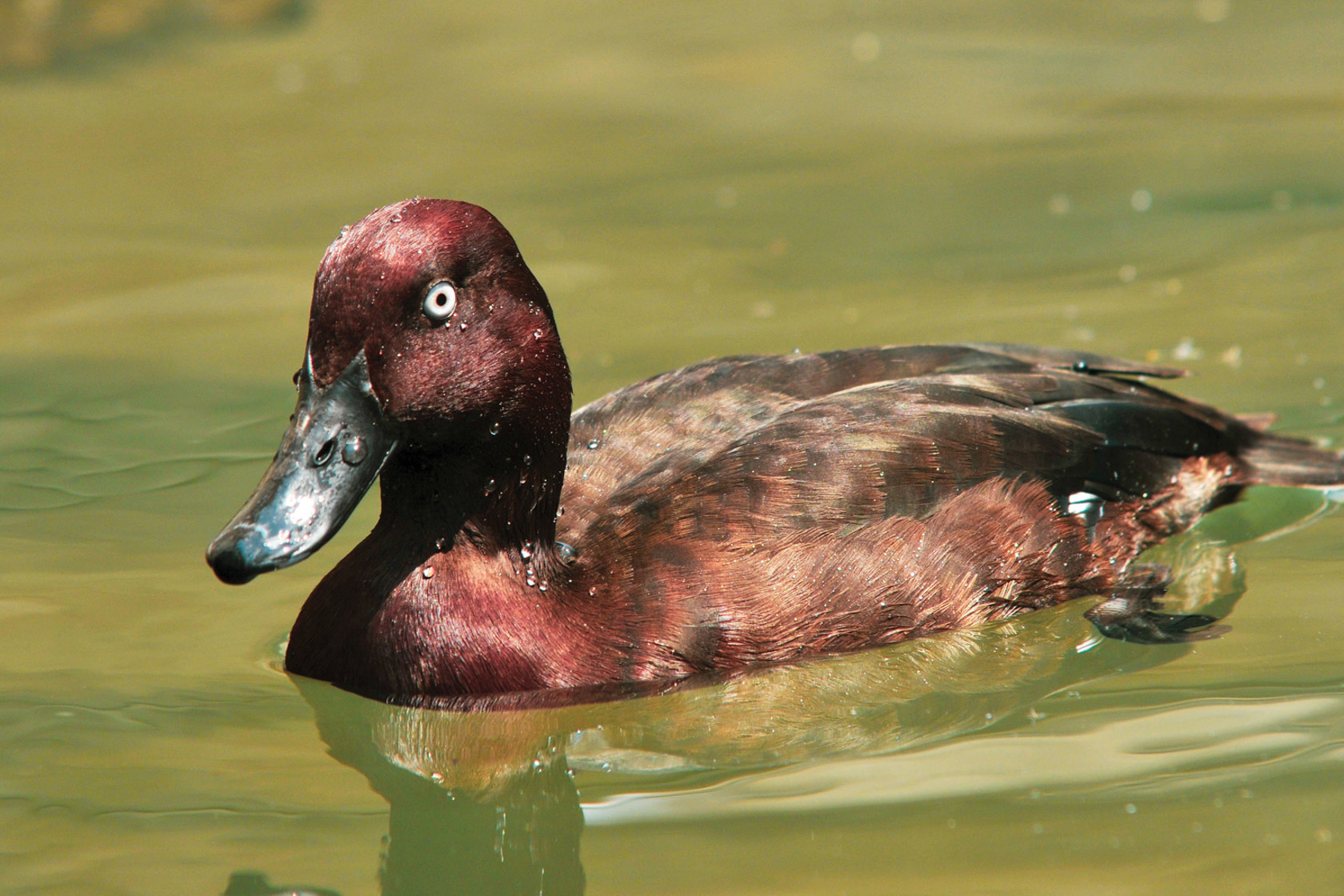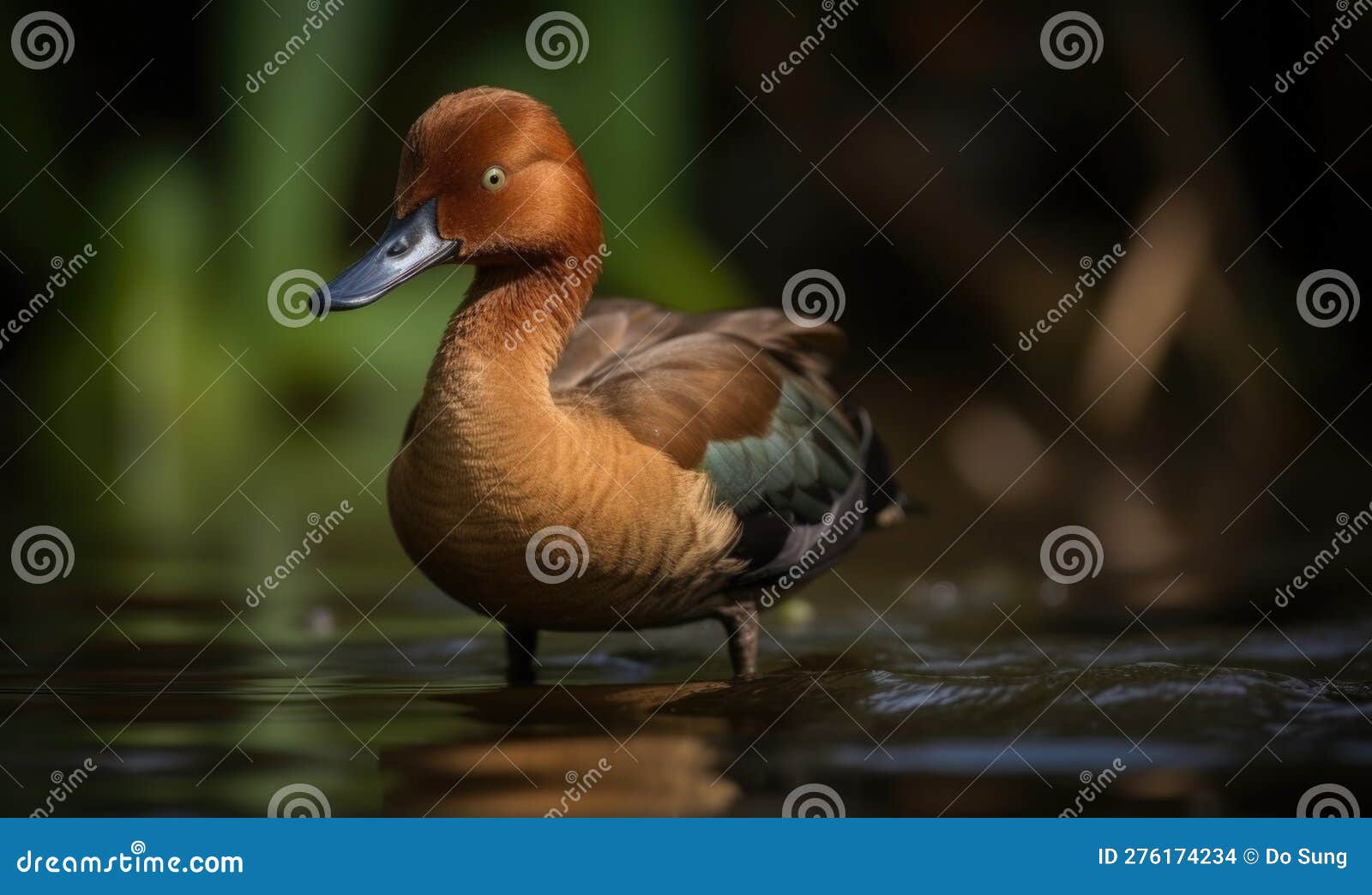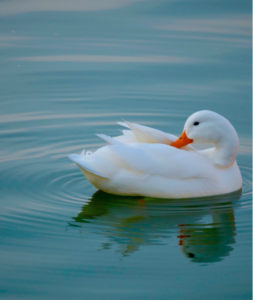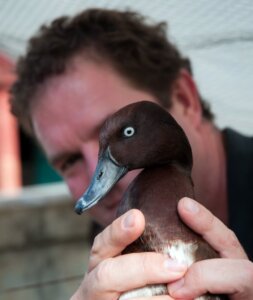Where Does the Madagascar Pochard Live: Discover Its Secret Habitat
The Madagascar Pochard lives in Madagascar. Specifically, it inhabits Lake Matsaborimena.
This rare duck species is critically endangered. Once thought extinct, it was rediscovered in 2006. Found only in Madagascar, it faces many threats. Habitat loss and human activities harm its survival. The Madagascar Pochard’s story is one of resilience and hope.
Conservation efforts are crucial to its future. Understanding its habitat is the first step. This blog explores where the Madagascar Pochard lives. Dive in to learn more about this unique bird and its surroundings.

Credit: www.durrell.org
Introduction To The Madagascar Pochard
The Madagascar Pochard is a rare duck. It lives in Madagascar. This bird is also known as the “Mad Pochard.” It is special because of its small population. There are very few of these ducks left in the wild. This makes them one of the rarest birds in the world.
Rare And Endangered
The Madagascar Pochard is on the brink of extinction. Scientists believe there are fewer than 100 of these ducks left. Loss of habitat is the main reason for their decline. Their wetland homes are disappearing. Pollution and hunting also threaten them. Conservationists are working hard to save these unique birds.
Physical Characteristics
The Madagascar Pochard has a distinct look. It has a chestnut-brown back and white belly. Its eyes are bright red. The male and female ducks look similar. However, the males are a bit brighter in color. Their small size and rounded bodies make them easy to spot. Their short wings are perfect for their wetland homes.
Historical Range And Decline
The Madagascar Pochard, a rare diving duck, once thrived in Madagascar. This bird is known for its rich chestnut plumage and striking eyes. Over time, its numbers have dwindled, sparking concern among conservationists.
Original Habitat
The Madagascar Pochard originally lived in the wetlands of Madagascar. These areas included lakes, marshes, and ponds with plenty of water plants. The birds thrived in the calm, clear waters of these habitats.
They used these waters for feeding, breeding, and shelter. The rich vegetation provided ample food and nesting sites. Their primary food sources were aquatic insects, small fish, and plant matter.
Factors Leading To Decline
The decline of the Madagascar Pochard began with habitat destruction. Human activities like agriculture and logging drained wetlands. This reduced the available habitat for the pochard.
Another factor was the introduction of non-native species. These species competed with the pochard for food and habitat. Predators, such as rats and cats, also posed a threat.
Pollution further degraded their habitat. Chemicals from farms and factories polluted the water, harming the birds. Climate change contributed by altering rainfall patterns, affecting water levels.
These factors combined to drastically reduce the Madagascar Pochard population. By the early 1990s, the bird was believed to be extinct.
Current Habitat
The Madagascar Pochard, a critically endangered duck species, has a very specific habitat. This rare bird, once thought extinct, now primarily resides in a few select locations. Understanding its current habitat is key to conservation efforts.
Recent Discoveries
Recent studies and explorations have shed light on the Madagascar Pochard‘s habitat. Conservationists discovered a small population living in a remote area. This finding was crucial for developing targeted conservation strategies.
In 2006, a significant discovery occurred. Researchers found a small group of Madagascar Pochards on Lake Matsaborimena. This was the first sighting in decades. Since then, efforts have focused on this area to protect the species.
Lakes And Wetlands
The primary habitat of the Madagascar Pochard includes lakes and wetlands. These environments provide essential resources. The birds rely on the water bodies for food and nesting.
Here is a table highlighting key features of their habitat:
| Habitat Feature | Importance |
|---|---|
| Shallow Waters | Feeding Grounds |
| Dense Vegetation | Nesting Sites |
| Clear Water | Visibility for Predators |
Essentially, lakes and wetlands provide a safe haven for the Madagascar Pochard. Conservationists focus on preserving and restoring these areas. This helps ensure the survival of this rare species.
The Madagascar Pochard also prefers areas with minimal human disturbance. Remote locations are ideal. This minimizes threats and disturbances from human activities.

Credit: news.mongabay.com
Conservation Efforts
The Madagascar Pochard is a critically endangered duck species. Conservation efforts are vital for its survival. These efforts include breeding programs and habitat restoration. Let’s explore these crucial activities.
Breeding Programs
Breeding programs aim to increase the Madagascar Pochard population. Zoos and conservation centers play a key role. They provide safe environments for the ducks to breed. These facilities monitor the health of the birds. They also ensure genetic diversity.
Successful breeding programs have already seen promising results. The Madagascar Pochard’s numbers are slowly rising. This gives hope for the species’ future.
Habitat Restoration
Habitat restoration focuses on improving the natural environment. The Madagascar Pochard needs specific conditions to thrive. This includes clean water, abundant food, and safe nesting sites.
Restoration projects help to clean polluted lakes and rivers. They also work to replant native vegetation. This provides shelter and food for the ducks.
Communities near these habitats are often involved. They learn how to protect the environment. This ensures long-term success for the restoration efforts.
| Conservation Effort | Actions Taken |
|---|---|
| Breeding Programs | Increase population, monitor health, ensure genetic diversity |
| Habitat Restoration | Clean water, replant vegetation, community involvement |
Conservation efforts are crucial for the Madagascar Pochard’s survival. Through breeding programs and habitat restoration, there is hope for this unique species.

Credit: www.dreamstime.com
Frequently Asked Questions
Where Is The Madagascar Pochard Found?
The Madagascar Pochard is found in Madagascar. Specifically, it inhabits lakes and wetlands in the northern region.
What Is The Habitat Of The Madagascar Pochard?
The Madagascar Pochard lives in freshwater lakes and marshes. These habitats provide the food and shelter it needs.
Why Is The Madagascar Pochard Endangered?
The Madagascar Pochard is endangered due to habitat loss and human activity. Conservation efforts are ongoing to protect it.
How Many Madagascar Pochards Are Left?
There are fewer than 100 Madagascar Pochards left in the wild. Conservation programs aim to increase their population.
Conclusion
The Madagascar Pochard lives in Lake Alaotra. This rare duck calls the wetlands home. Conservation efforts help protect their habitat. These birds need clean, safe water to thrive. Learning about their habitat helps us understand their needs. Every effort counts in preserving this unique species.
We can make a difference for the Madagascar Pochard.
Hello Dear, I'm Poli Kolymnia, owner of many birds (including budgies).
With a deep passion for these feathered companions, I'm here to share my expertise and extensive knowledge on birds care.
My articles cover essential topics like diet, housing, care, and health, providing practical tips to help you create a happy and thriving environment for your birds.






